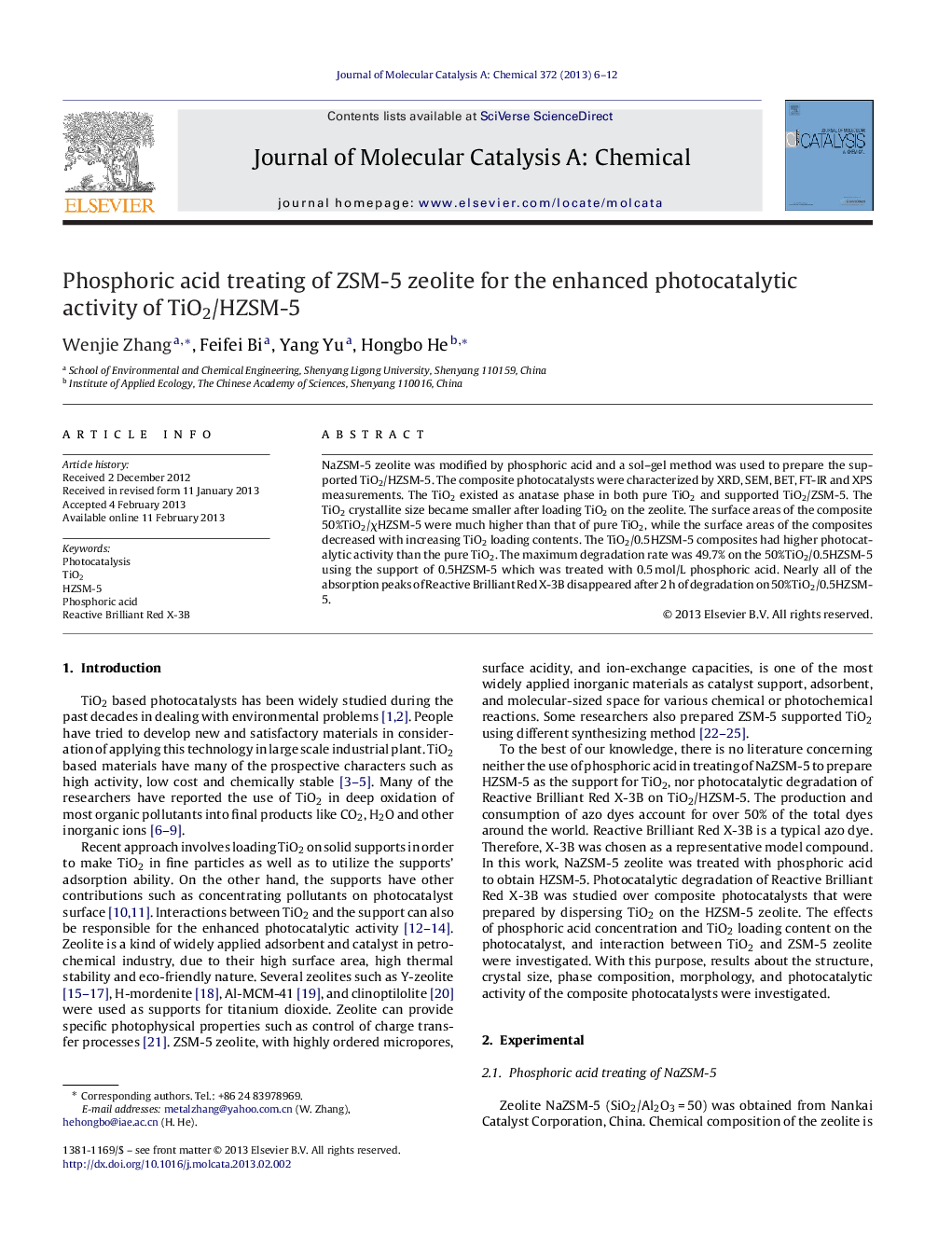| کد مقاله | کد نشریه | سال انتشار | مقاله انگلیسی | نسخه تمام متن |
|---|---|---|---|---|
| 65807 | 48404 | 2013 | 7 صفحه PDF | دانلود رایگان |

NaZSM-5 zeolite was modified by phosphoric acid and a sol–gel method was used to prepare the supported TiO2/HZSM-5. The composite photocatalysts were characterized by XRD, SEM, BET, FT-IR and XPS measurements. The TiO2 existed as anatase phase in both pure TiO2 and supported TiO2/ZSM-5. The TiO2 crystallite size became smaller after loading TiO2 on the zeolite. The surface areas of the composite 50%TiO2/χHZSM-5 were much higher than that of pure TiO2, while the surface areas of the composites decreased with increasing TiO2 loading contents. The TiO2/0.5HZSM-5 composites had higher photocatalytic activity than the pure TiO2. The maximum degradation rate was 49.7% on the 50%TiO2/0.5HZSM-5 using the support of 0.5HZSM-5 which was treated with 0.5 mol/L phosphoric acid. Nearly all of the absorption peaks of Reactive Brilliant Red X-3B disappeared after 2 h of degradation on 50%TiO2/0.5HZSM-5.
Figure optionsDownload high-quality image (73 K)Download as PowerPoint slideHighlights
► NaZSM-5 treated by phosphoric acid was used as support to prepare TiO2/HZSM-5.
► The effects of phosphoric acid concentration and TiO2 content were investigated.
► The TiO2/0.5HZSM-5 had much improved photocatalytic activity than pure TiO2.
Journal: Journal of Molecular Catalysis A: Chemical - Volume 372, June 2013, Pages 6–12